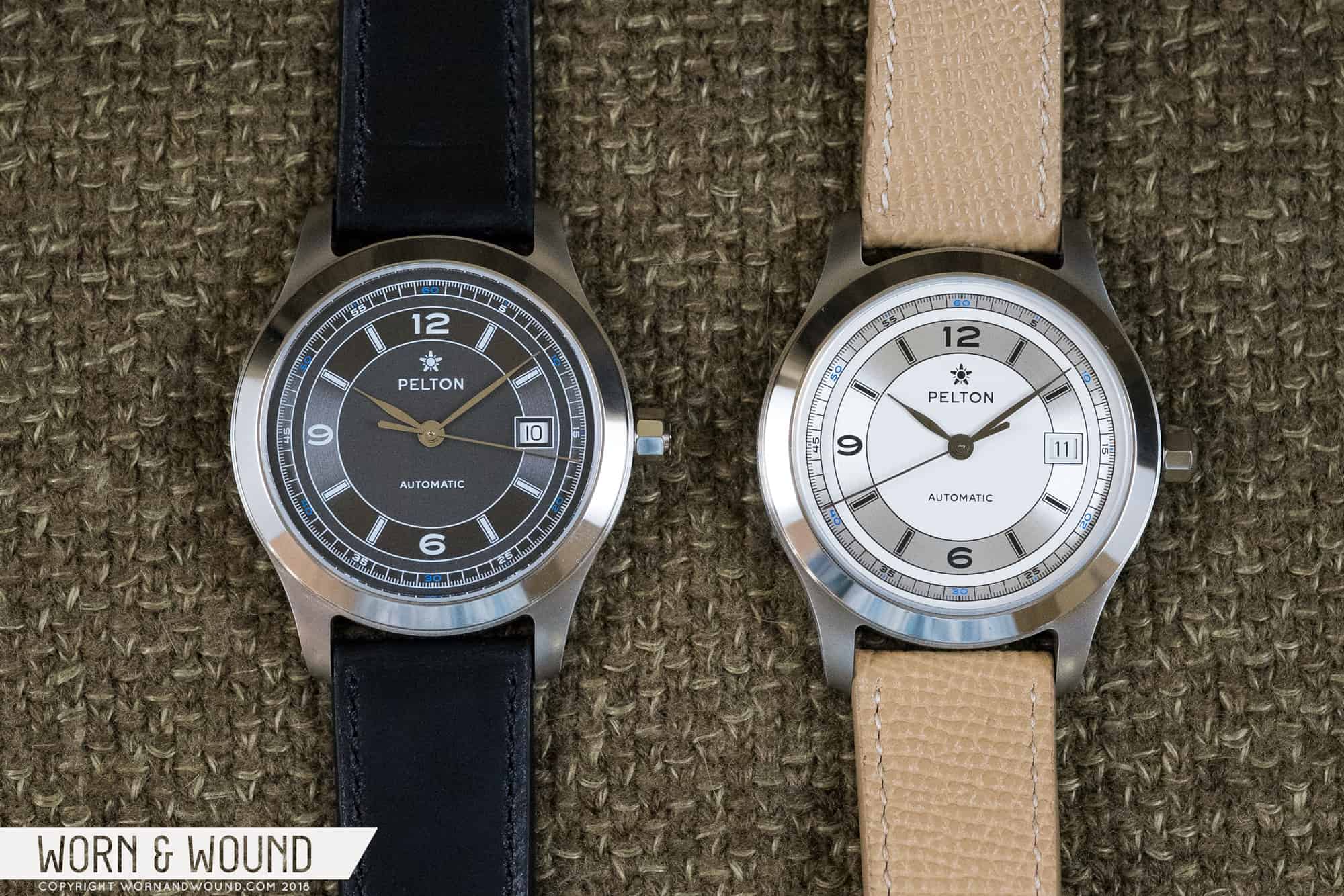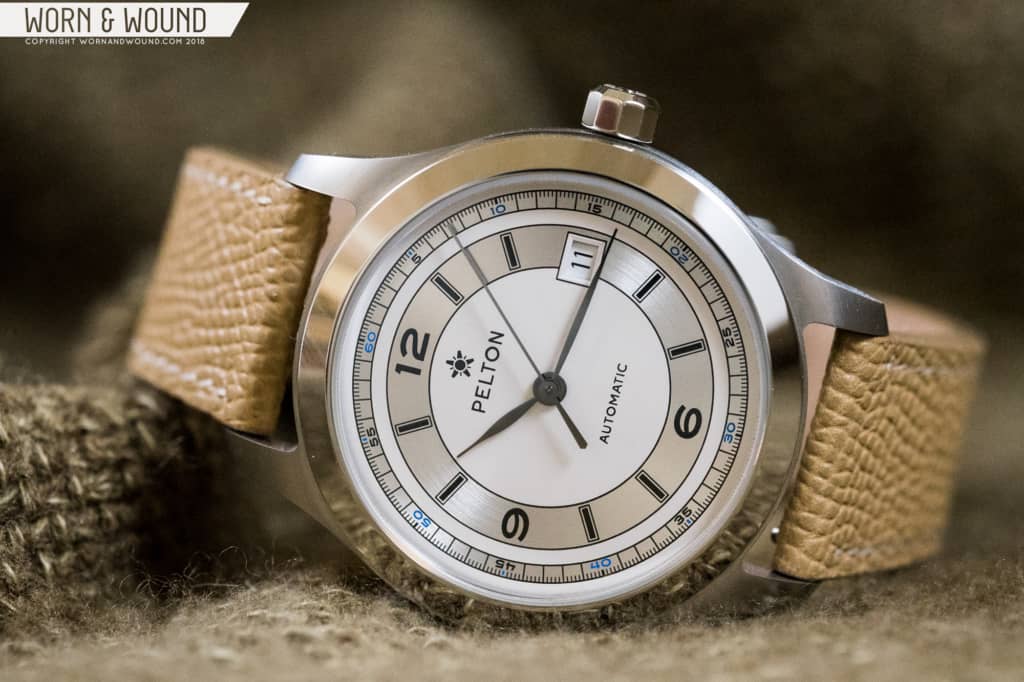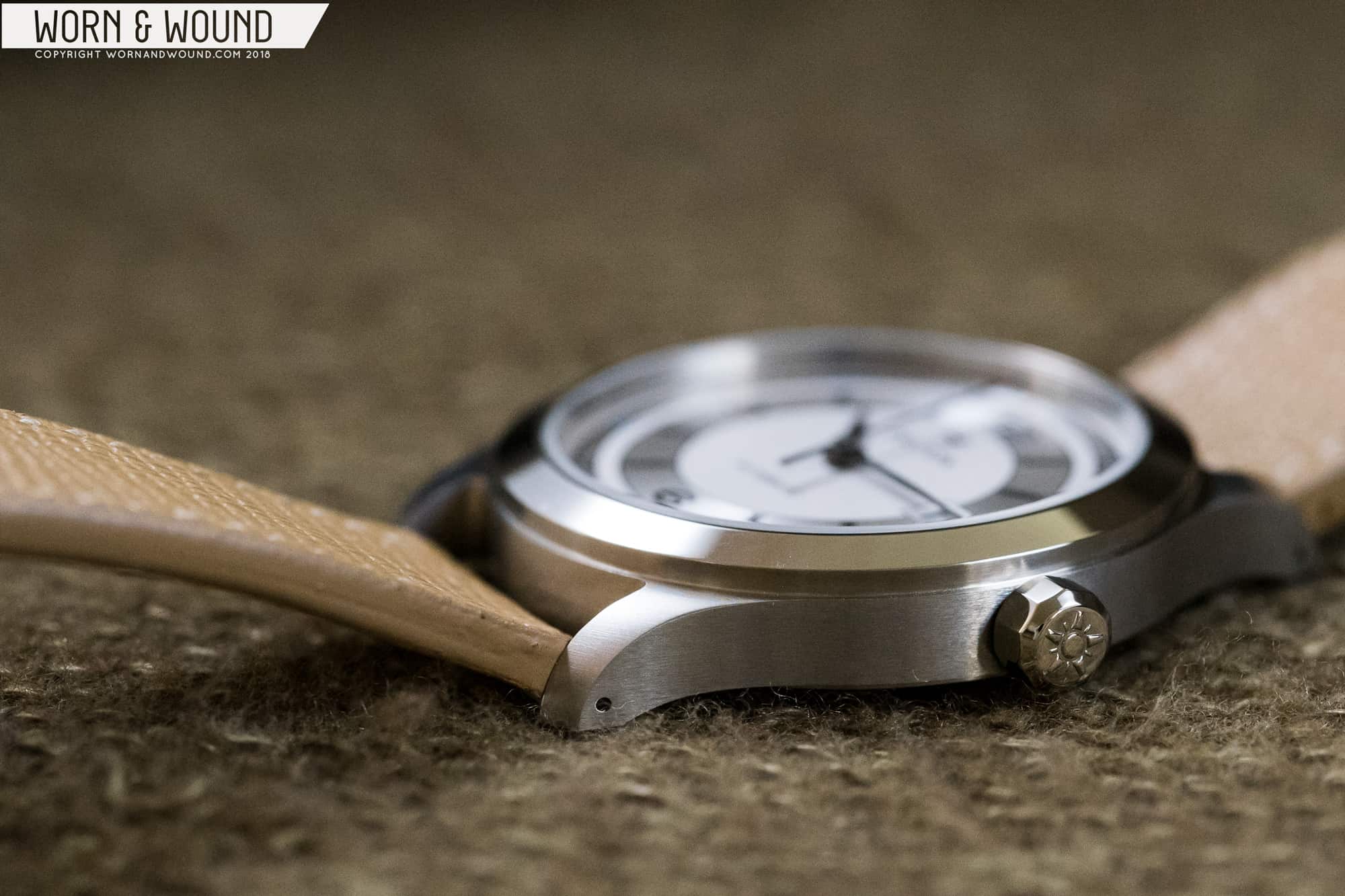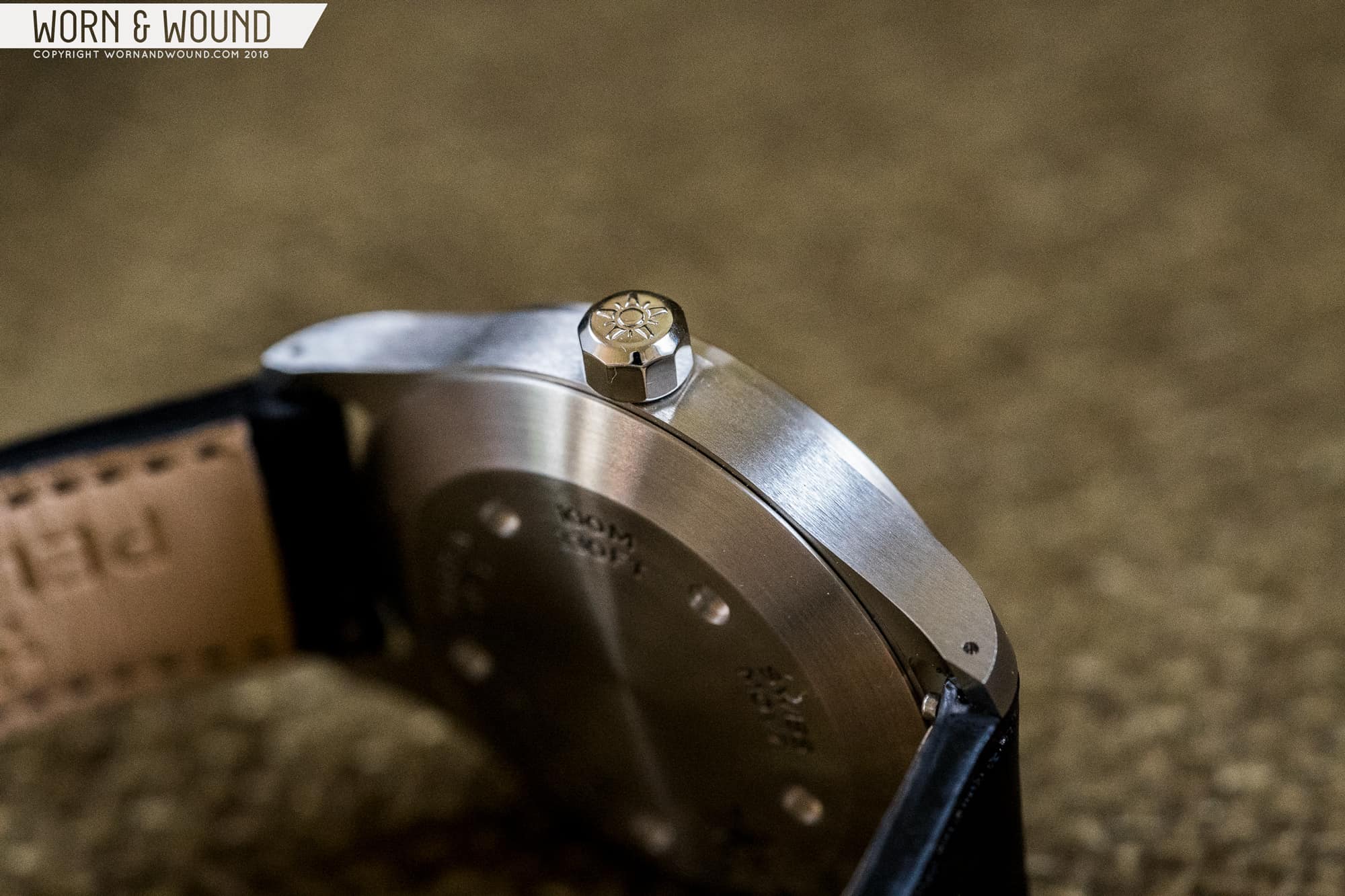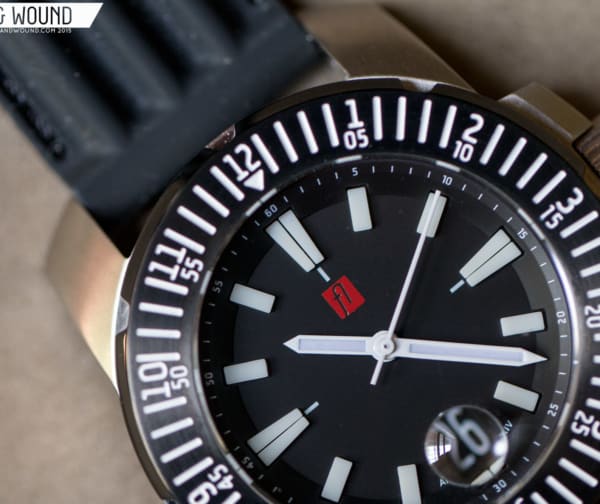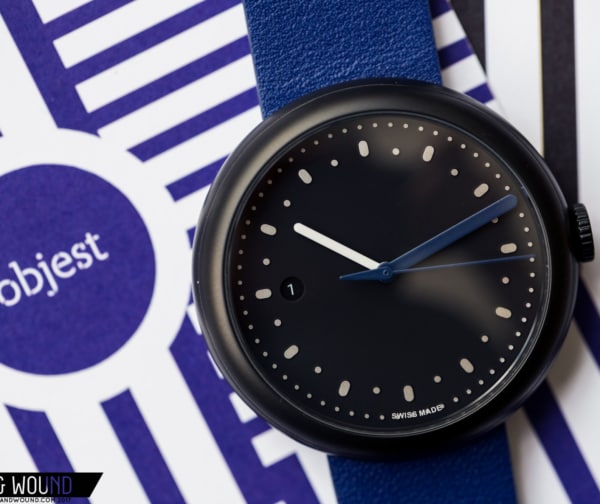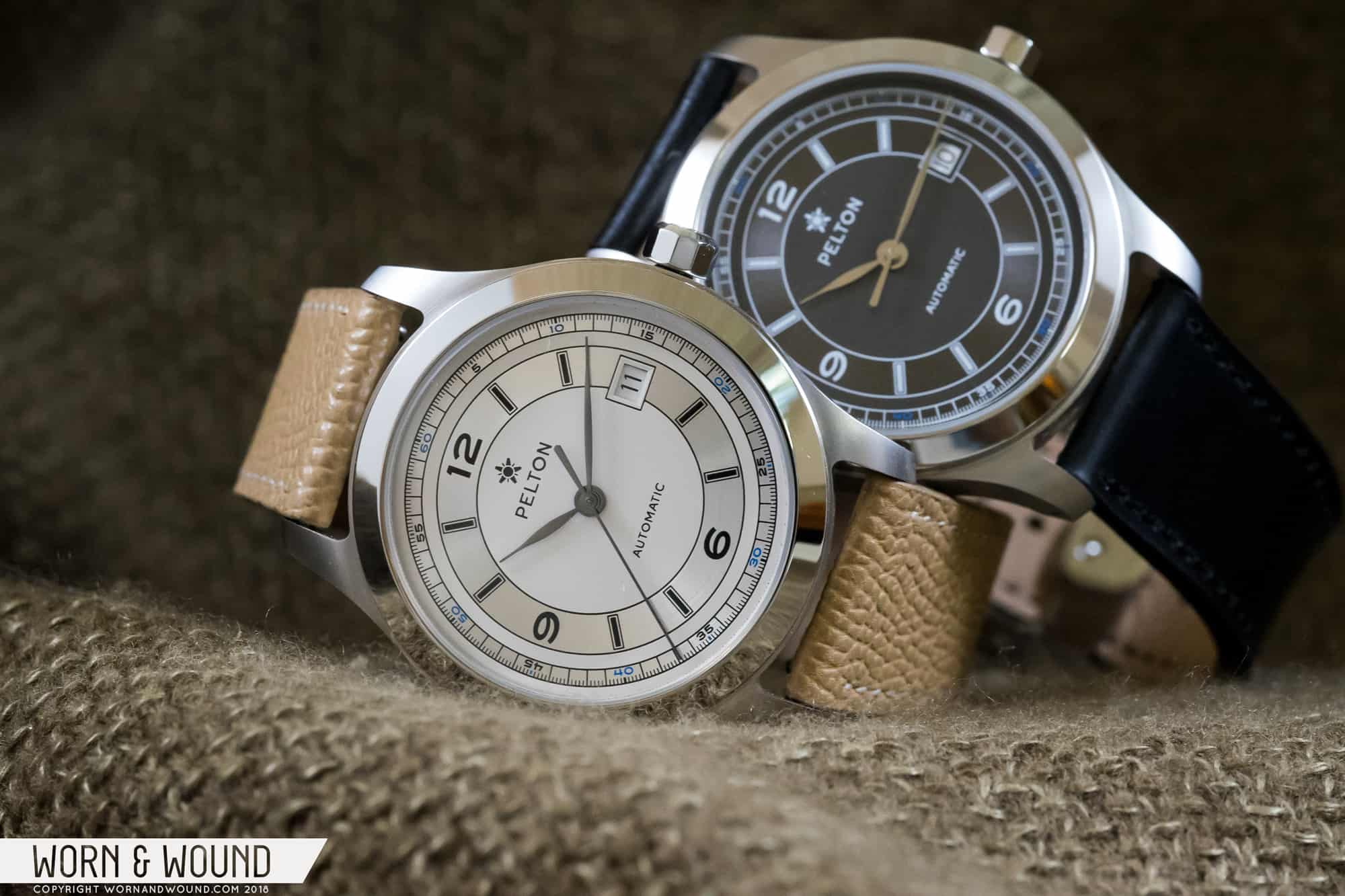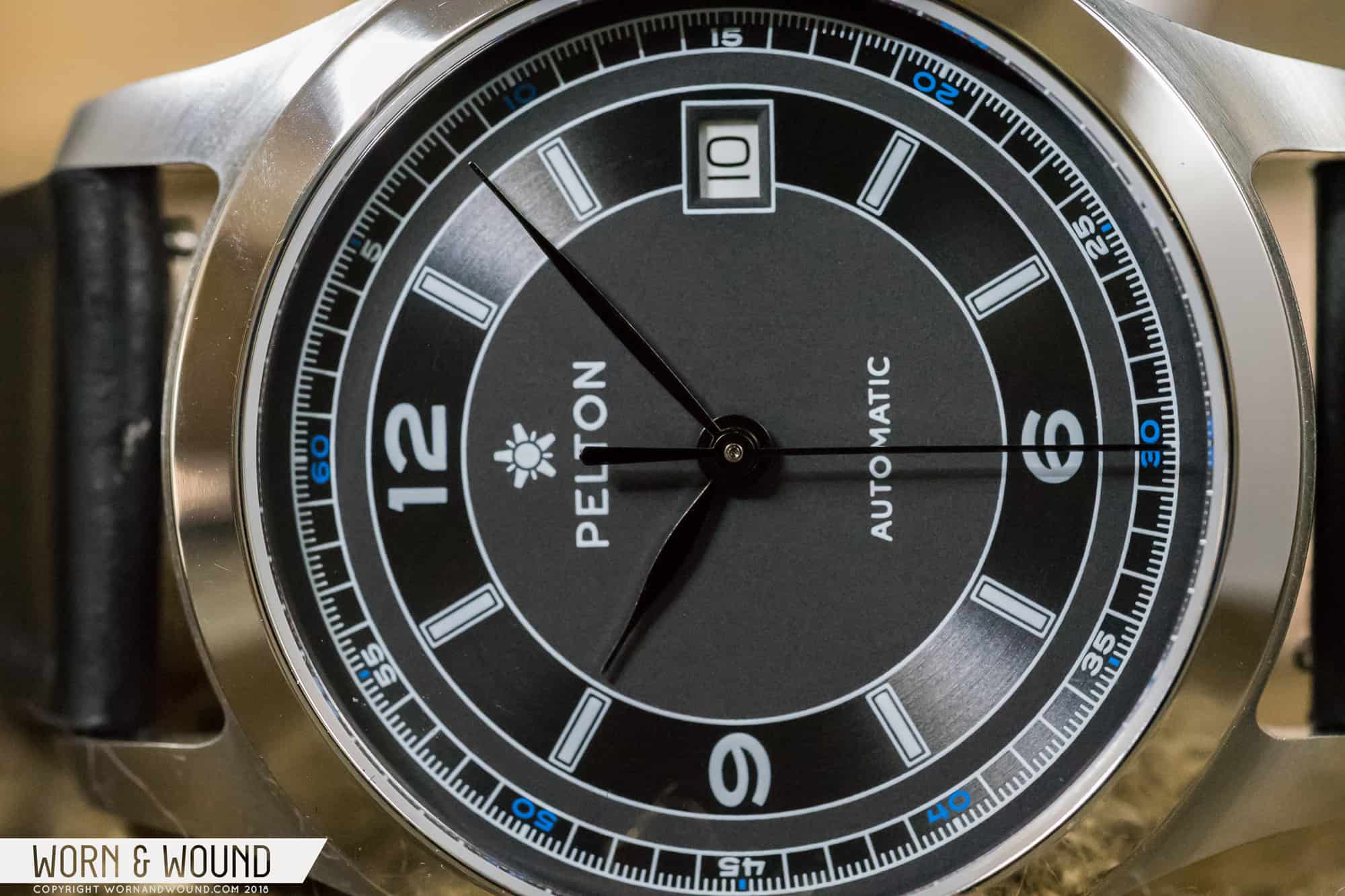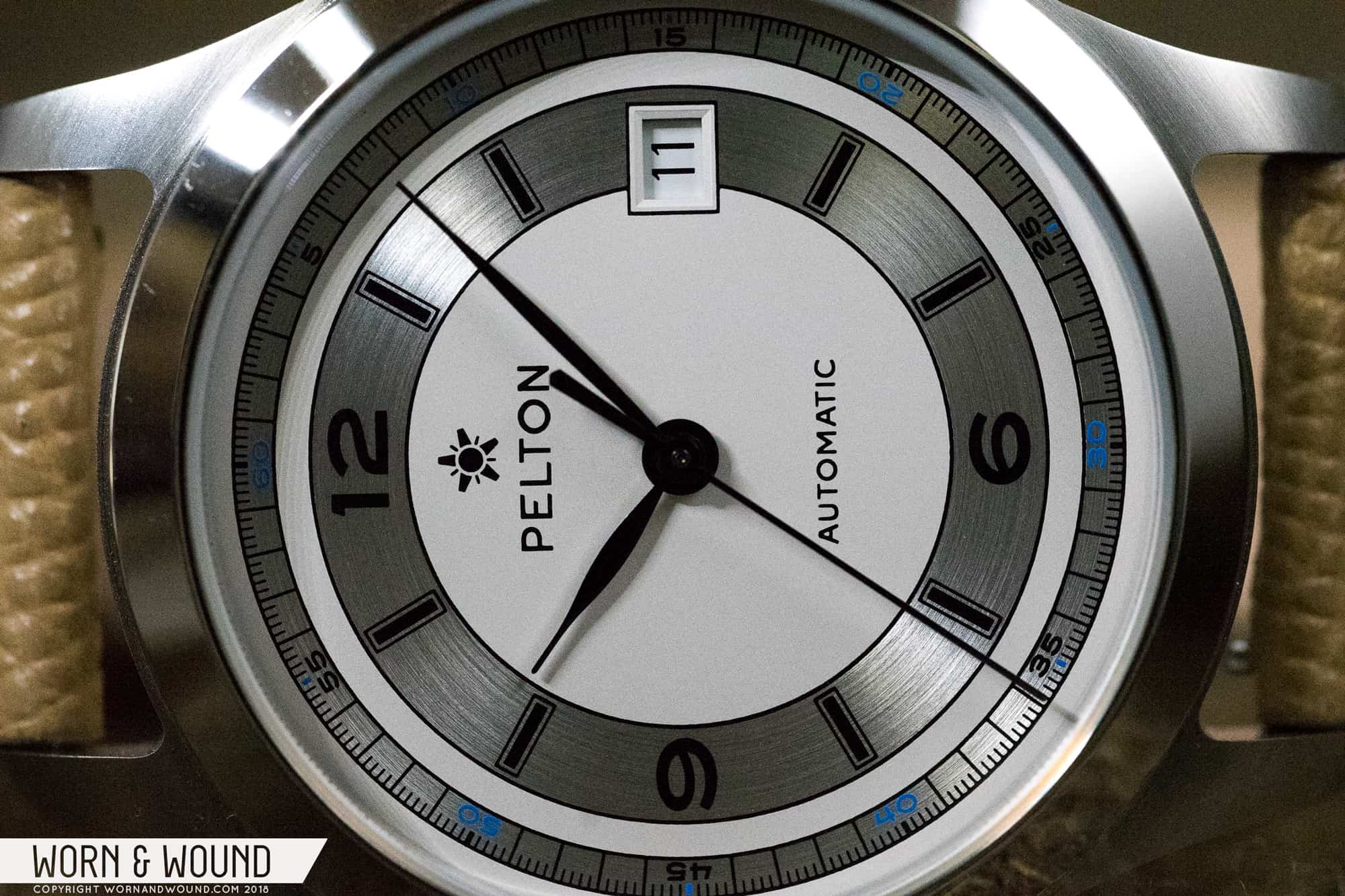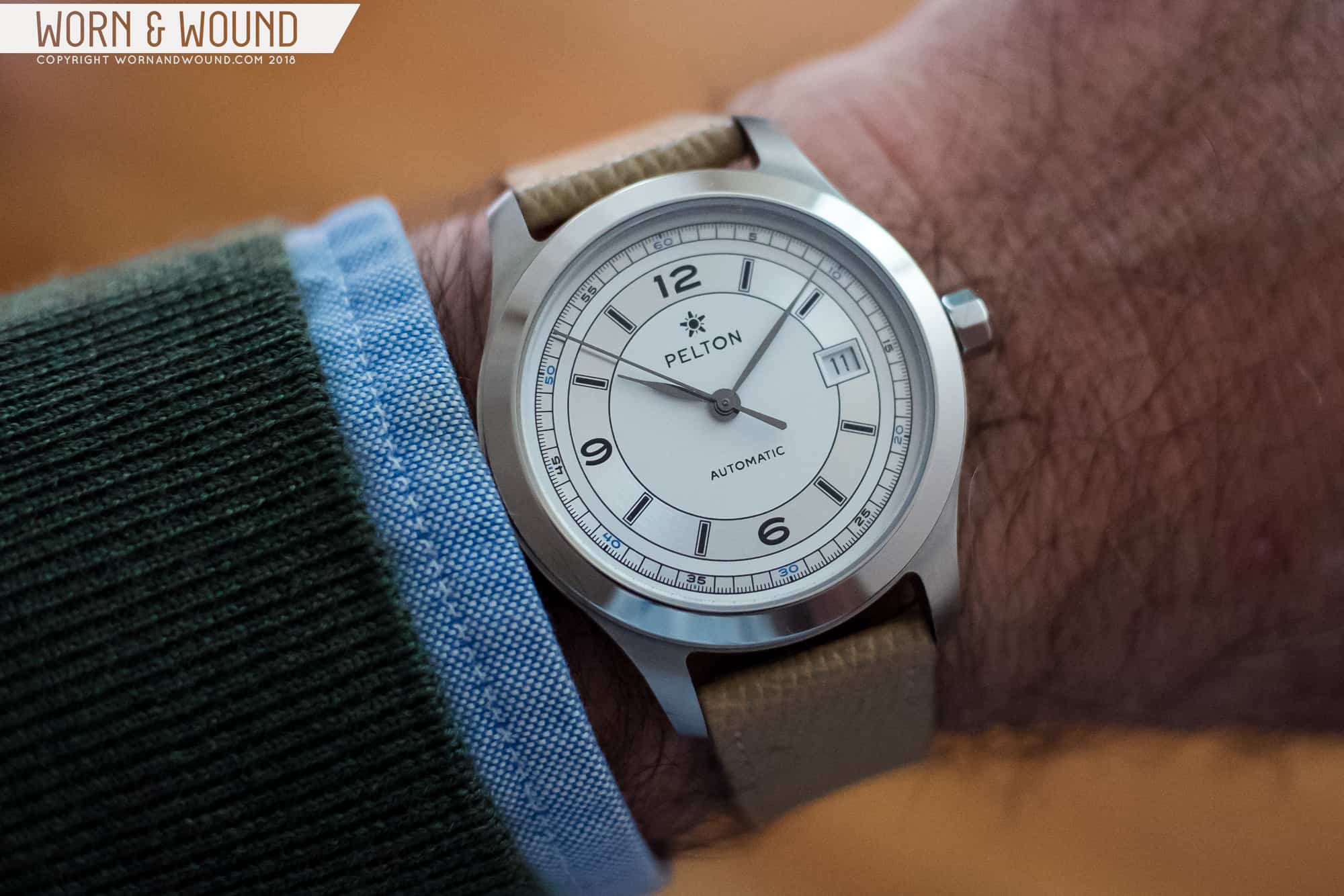Pelton is the second entrepreneurial venture of Detroit-based machinist, designer, businessman and all around interesting guy, Deni Mesanovic. His first was Mesanovic Microphones, where he managed to improve on hundred-year-old ribbon microphone technology, successfully machining aluminum ribbons that are 1/50th the thickness of a human hair while simultaneously improving the tiny motors involved in these delicate devices. His other passion is watches, and it wasn’t a huge leap for him to take on the meticulous work of watchmaking. Deni now owns and operates a host of computer-aided and old-school hand-operated metalworking machines dedicated to watchmaking.
Pelton makes their own cases and crowns in-house and, significantly, they also produce the only watch bracelet that can legitimately claim to be “Made in the USA.” That bracelet lives on Pelton’s Royal Oak tribute watch, The Perseus, so we’ll have to leave the impressive 131-piece, handmade bracelet to the side for now. That bracelet is, however, an exercise in proving Pelton’s capabilities, and it’s worth checking out their video of how that bracelet is made in order to appreciate Pelton’s metalworking capabilities.
Those same capabilities go into making the 40-millimeter Sector. When you hold the Sector in your hand the precision is immediately apparent; edges are immaculate and striking, and under the loupe they are even more impressive. Deni told me that the ultra-sharp connections are part of what he sees as an emerging American watch aesthetic. With other companies like Vero and Vortic CNC’ing their own ultra-precise cases here in the USA, he may be right.




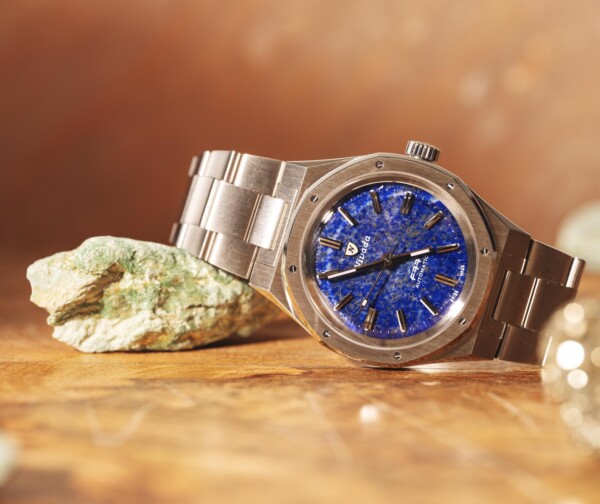




 Featured Videos
Featured Videos




